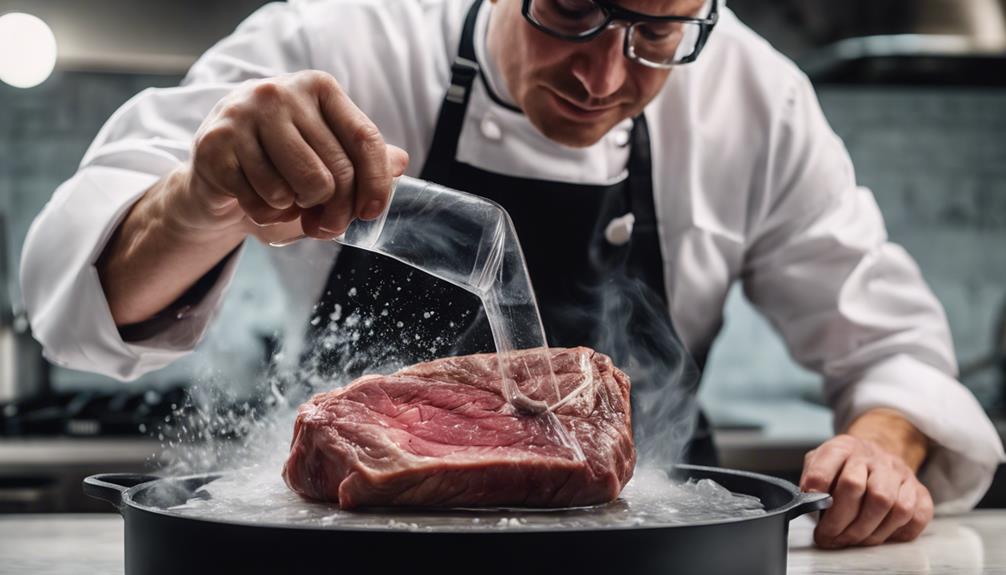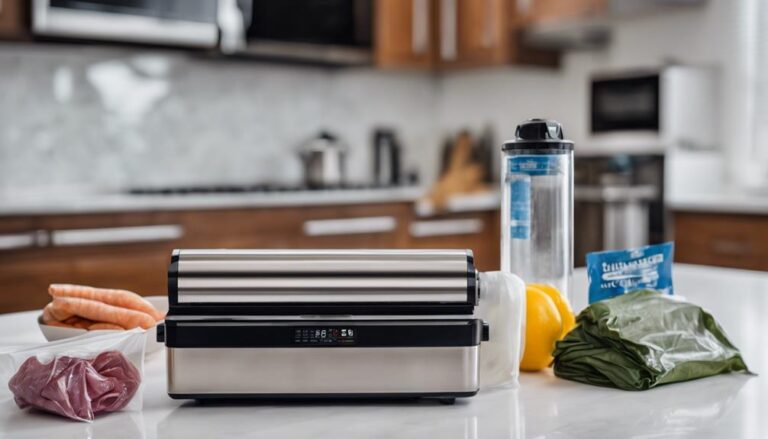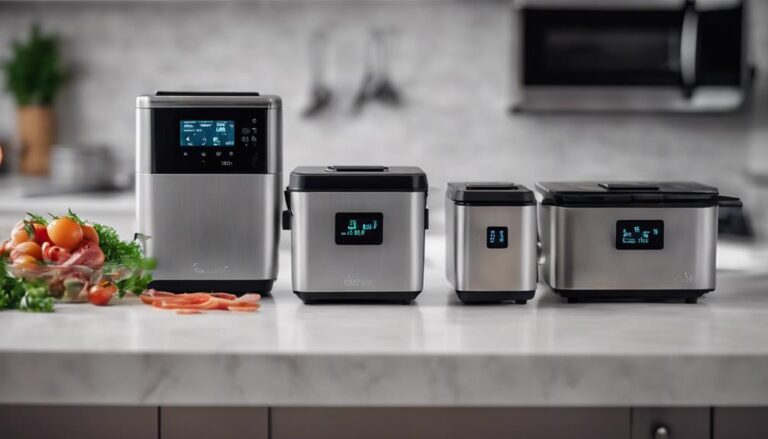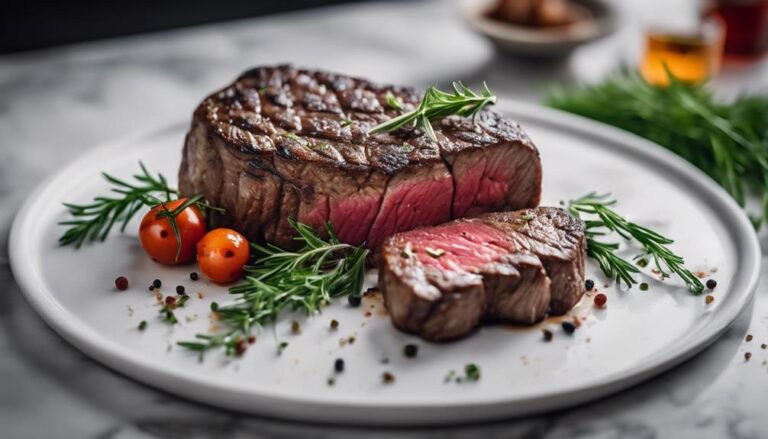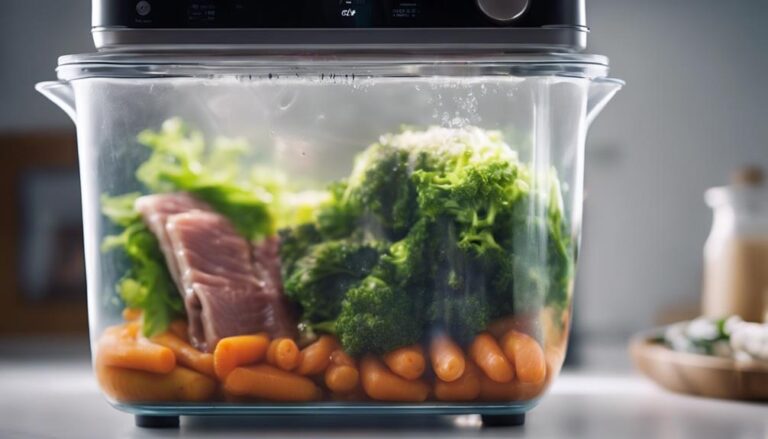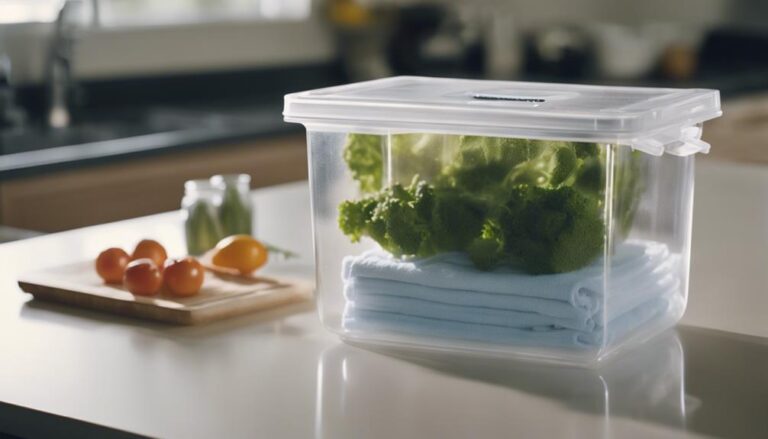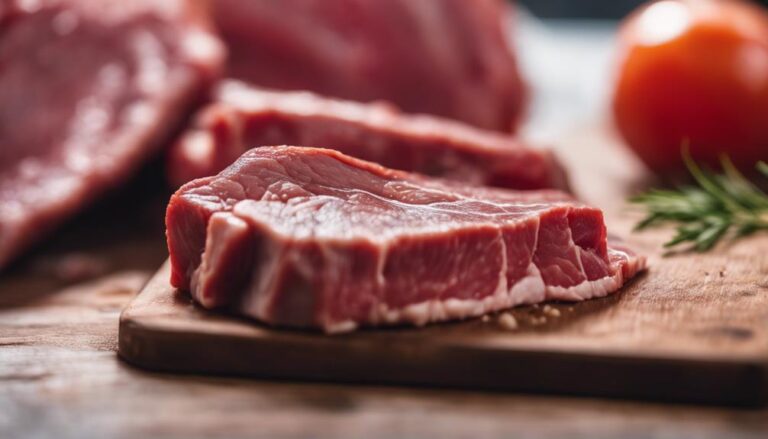Common Myths and Misconceptions About Sous Vide Cooking
Think sous vide cooking is complicated? Fear not! Contrary to popular belief, using plastic bags is safe; harmful plastics were banned in 2012. Cooking low and slow isn't just for snails; it gives food the VIP treatment! Worried about ruining your protein? Overcooking is no party for chicken or seafood. And guess what? You don't need a Ph.D. in food science to nail sous vide—just some basic gear and a willingness to learn. Interested to uncover more secrets behind this culinary magic? Keep exploring to become a sous vide wizard!
What You Will Learn Here
- Sous vide cooking is not complicated; basic equipment and willingness to learn are all you need.
- Avoid overcooking by monitoring proteins like chicken and seafood closely during the cooking process.
- Different proteins have varying sensitivities to overcooking in sous vide; proper handling is essential.
- Extended exposure to low temperatures can lead to texture degradation, so monitor time and temperature carefully.
- Debunk myths to achieve excellent results; experiment with settings for desired texture and quality.
Safety Concerns Addressed
If you're worried about safety when it comes to sous vide cooking, rest assured that regulations have banned harmful plastics in food production since 2012. That means your sous vide adventures are now safer than ever, thanks to BPA and phthalate-free materials making their way into your kitchen. Those plastic bags designed for sous vide cooking? They're like little heat-resistant shields, creating a secure cooking environment for your meals. So, go ahead and seal your ingredients in those bags without a worry in the world.
When it comes to food safety, proper cleaning practices in the kitchen steal the show. Forget the plastic bag debate; focus on keeping your cooking space squeaky clean. Sous vide actually reduces the risk of food contamination compared to traditional cooking methods, giving you an extra layer of culinary security. Just remember to follow those food safety guidelines and use the right materials for your sous vide setup. Happy cooking!
Cooking Time Clarifications
Clarify cooking times in sous vide by understanding the relationship between temperature and duration for best results. In sous vide cooking, it's like embarking on a cozy spa day for your food – low and slow is the motto here. By cooking at lower temperatures for longer periods, you're giving your food the VIP treatment it deserves. This method might take a tad longer than your usual cooking dance, but oh boy, the results are worth it!
Forget the myths that say sous vide cooking is only for Michelin-star chefs. With the right temperature control and a trusty vacuum sealer, you can immerse yourself in this culinary adventure right in your kitchen. The magic happens when you let your food bathe in a warm water bath, getting all tender and flavorful without you breaking a sweat.
Quality Outcome Myths
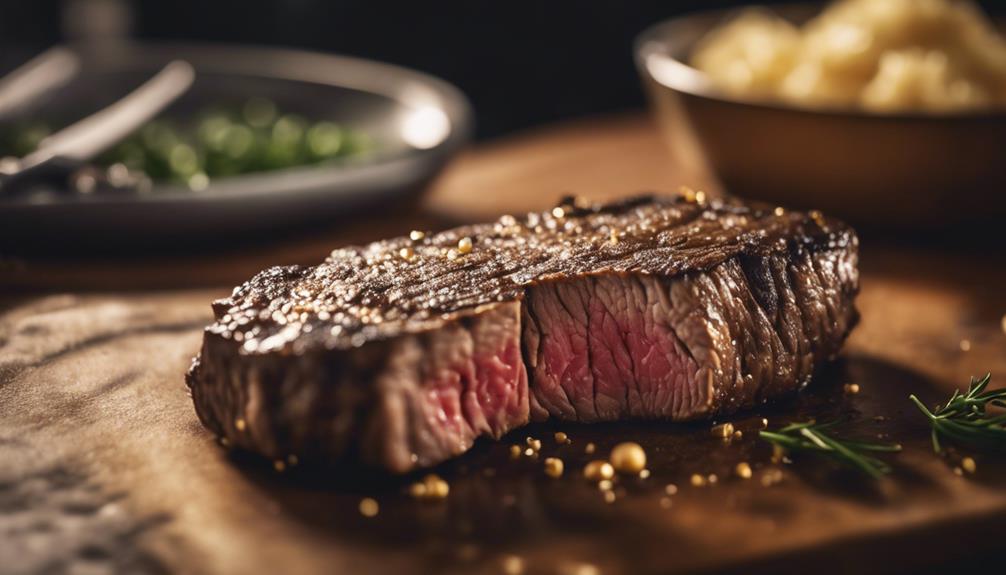
Quality outcomes in sous vide cooking are often misunderstood due to prevalent myths surrounding the technique. Let's debunk some of these misconceptions to help you achieve excellent results in your sous vide dishes:
- Texture Degradation: Extended exposure to low temperatures can sometimes lead to texture degradation in your food. So, while sous vide can work wonders, keep an eye on the clock to avoid any unwanted mushiness.
- Proteins Denature: Proteins, like those in chicken and seafood, can denature if cooked for too long at low temperatures. Remember, you want your proteins juicy and tender, not overly soft and unappetizing.
- Time and Temperature: Monitoring time and temperature is key to nailing your sous vide dishes. Experiment with different settings to find the perfect balance for that mouthwatering texture and quality you crave.
Skill Level Misconceptions
So, you think sous vide cooking is only for culinary wizards with magic wands?
Think again! The truth is, this method is like your favorite recipe – with a twist!
You'll be a sous vide pro in no time, just wait and see!
Skill Level Misconceptions
Mastering sous vide cooking doesn't require advanced skills; it's accessible to most home cooks with basic equipment and a willingness to learn. Here are some key points to help you debunk the common myths surrounding sous vide cooking:
- Sous Vide Equipment: Contrary to popular belief, you don't need fancy gadgets to start sous vide cooking. A simple immersion cooker or a pot can work wonders.
- Cooking Method: Sous vide may sound fancy, but it's just a water bath with a little science magic. Once you understand the basics, you're on your way to gourmet meals.
- Experimentation: Don't be afraid to get creative! Start with easy recipes to boost your confidence, and soon you'll be sous vide-ing like a pro.
Common Cooking Misconceptions
Don't let common misconceptions about cooking skills deter you from exploring the world of sous vide. Some folks think you need to be a Michelin-star chef to give sous vide a try, but that's just baloney in a bag! All you need is to immerse your food in a plastic bag, set the temperature, and let that water bath work its magic.
Say goodbye to the days of overcooking—sous vide has your back! It's like having a personal temperature-controlled chef right in your kitchen. So, grab your gear, delve into the world of sous vide cooking, and show off your skills without breaking a sweat. You got this!
Sous Vide Expertise Myths
Exploring the myths surrounding sous vide expertise reveals that anyone can master this cooking method with the right tools and practice. Here are some simplified truths to help you navigate the world of sous vide cooking:
- Basic Equipment: You don't need a fancy kitchen setup to start sous vide cooking.
- Learning Curve: Watching tutorials and starting with simple recipes can greatly enhance your sous vide skills.
- Practice Makes Perfect: Like any skill, mastering sous vide techniques comes with practice and experimentation.
With these debunked myths, you can confidently immerse yourself in the world of sous vide, impressing friends and family with perfectly cooked meals without the fear of food poisoning risks.
Equipment Cost Misunderstandings
Hey, are you worried about the cost of getting into sous vide cooking? Think again! Sous vide equipment comes in a range of prices, making it accessible for all budgets.
Don't let the initial investment scare you – in the long run, you might actually save money by turning those inexpensive cuts of meat into gourmet masterpieces!
Cost-Effective Sous Vide
Sous vide cooking doesn't have to break the bank, as there are affordable options available for home cooks to enjoy cost-effective equipment. Here's why cost-effective sous vide is within reach:
- Affordable Machines: You don't need a fancy gadget that costs more than a spaceship. Entry-level sous vide machines can be budget-friendly and get the job done deliciously.
- Cheap Plastic Bags: No need to vacuum-seal your food in gold-plated bags. Regular plastic bags work just fine for sous vide cooking, saving you a pretty penny.
- Long-Term Savings: Sure, the initial investment might sting a bit, but think of all the money you'll save tenderizing those tough cuts of meat into succulent perfection over time. Who said being a home cook couldn't be cost-effective and gourmet?
Budget-Friendly Equipment Options
When considering budget-friendly equipment options for sous vide cooking, keep in mind that affordable choices can deliver excellent results without breaking the bank. Contrary to common myths surrounding sous vide, there are plenty of affordable sous vide equipment options available that won't leave your wallet weeping. These cost-effective options not only make at-home sous vide cooking a breeze but also lead to long-term cost savings. One recommended choice is the Suvi Cooking Machine, known for its efficiency and affordability. Plus, don't fall for the outdated misconception that sous vide accessories are expensive. Embrace the budget-friendly side of sous vide and gear up with the essentials without draining your savings account.
| Affordable Sous Vide Equipment | Benefits |
|---|---|
| Suvi Cooking Machine | Cost-effective option |
| Budget-Friendly Accessories | Long-term cost savings |
Misconceptions About Initial Costs
Despite common misconceptions about initial costs, sous vide equipment is available at various price points, including affordable options for home cooks.
When considering the investment, remember that sous vide can turn those cheaper cuts of meat into culinary delights, saving you money in the long run.
Plus, vacuum sealing your foods doesn't have to break the bank – those trusty zipper-lock bags can do the trick just fine!
Overcooking Fallacies
To avoid overcooking in sous vide, it's essential to keep a close eye on your cooking time and temperature. Extended exposure to low temperatures can wreak havoc on your protein, leading to texture degradation and a not-so-tasty outcome. Nobody wants a perfectly good steak turning into something that resembles a forgotten shoe left out in the rain. By monitoring the sous vide process, you can prevent this culinary tragedy.
Proteins like chicken and seafood are particularly sensitive souls when it comes to overcooking in sous vide. They can quickly go from tender and juicy to downright mushy if you're not careful. So, be their culinary guardian angel and watch over them diligently.
Don't be afraid to play around with different time and temperature settings to find that sweet spot of perfectly cooked goodness without the dreaded overcooking disaster. It's all about finding that balance and treating your food with the love and respect it deserves.
Frequently Asked Questions
What Are the Problems With Sous Vide Cooking?
When cooking sous vide, be mindful of temperature control, cooking times, and equipment maintenance. Guarantee food safety, infuse flavors, maintain texture consistency, and make recipe adjustments as needed. Experiment with settings to achieve best results.
What Is a Disadvantage of Sous Vide?
Slow cooking with sous vide can be a drawback due to longer cooking times. Precision cooking, vacuum sealing, and temperature control are great, but some find it a disadvantage. Equipment cost can also be a factor to take into account.
What Are the Risks of Sous Vide Cooking?
To guarantee food safety in sous vide cooking, prioritize temperature control, prevent bacterial growth, and address health concerns. Proper sealing, equipment maintenance, and monitoring cooking times are key. Following guidelines and maintaining precision are essential for safe outcomes.
What's One Question You Have About Sous Vide Cooking?
Interested in learning more about sous vide cooking? Guarantee optimal results with precise temperature control, exact cooking times, heightened flavors, appropriate vacuum sealing for safety, and tender outcomes. Immerse yourself in the world of sous vide!
Conclusion
So there you have it, folks! Sous vide cooking may seem intimidating at first, but once you debunk these common myths and misconceptions, you'll be a pro in no time.
Remember, it's all about safety, timing, quality, skill, equipment, and avoiding those overcooked disasters.
So go ahead, give it a try and impress your friends and family with perfectly cooked meals every time! Happy cooking!
